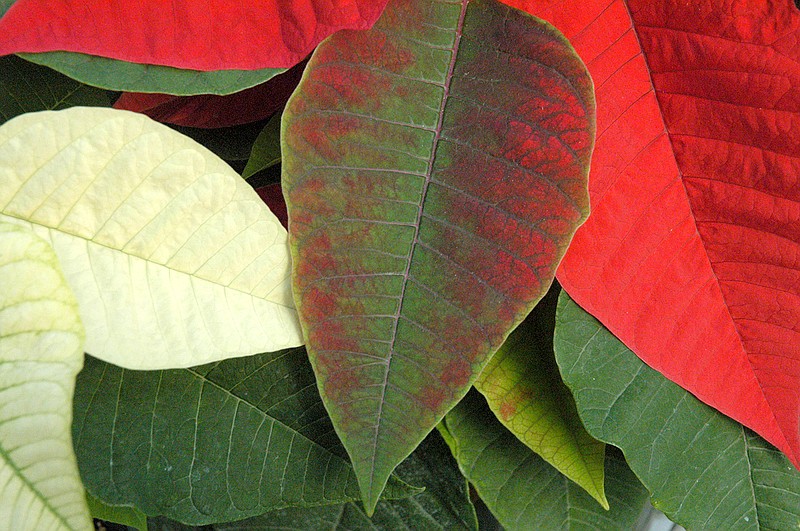That forlorn-looking, leftover plant from a bright holiday season can burst with merry blooms again if given tender, loving care.
"The care given a poinsettia following the holiday season largely will dictate whether or not the plant lives to see another Christmas," said University of Missouri Extension horticulturist David Trinklein. "Most avid gardeners cannot bear the thought of discarding a healthy plant. Thus, this is the time of the year when many poinsettias find their way from a prominent location in the home to a sunny window."
Re-blooming a poinsettia the following Christmas is not easy, but it is interesting and rewarding, Trinklein said. "If you are up to the challenge, then take good care of your plant throughout the winter by keeping it in a bright window. The plant probably will not make much active growth, therefore fertilize it sparingly."
After the danger of frost has past, move the plant, with pot, outdoors to a well-lit location. Water and fertilize the plant throughout the spring and summer. Once outdoors, the plant should make significant growth and exceed what is an attractive plant-to-pot ratio, Trinklein said.
When this happens, trim the plant severely - 6-8 inches - to make it more compact. Do this around Labor Day and move the plant indoors.
Poinsettias are short-day plants that bloom only when receiving about 13 hours of uninterrupted darkness each day.
In the Midwest, that critical day length occurs about Sept. 25. This triggers the flowering response, which in turn leads to the formation of the colorful bracts.
Carry out the following regimen in the home to force it to flower:
In late September, set the poinsettia in a dark closet every evening at sunset and remove it the following morning after sunrise. Alternatively, place a lightproof hood or cover over the plant each day at dusk and remove it the next morning.
This practice can be discontinued when color development of the bracts is well underway, Trinklein said.
Don't be discouraged if your yearlong effort does not produce a plant as beautiful as it was the year before, he said. "Even the best conditions indoors provide considerably less light than the greenhouse the plant was produced in originally. However, it is worth the effort to see the phenomenon of leaves turning into colorful bracts at least one time by re-blooming a poinsettia."
More information about poinsettia care is available in the MU Extension guide "Care of Flowering Potted Plants" (G6511) at extension.missouri.edu/p/G6511#Poinsettia.

